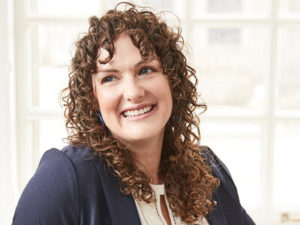
Look-alike models can be used to expand a brand’s target audience. These models analyze a small dataset of consumers and identify desirable characteristics. The model is then used to find more people who share those traits in a larger set of data, providing access to an otherwise unknown population of consumers.
When applied to market research studies, these models can greatly improve efficiencies, save time and money. We recently created one such model for a large pharmaceutical company, applying a subset of data from a study to a large population with a 90% accuracy rate.
To explain more about it, we talked to our client Julie Kenney, COO, and Co-Founder of 2nd Spark, to learn about this real-world example of a large pharmaceutical company using look-alike modeling in conjunction with a research study.

Tell us about 2nd Spark and the work you do for Pharmaceutical companies.
2nd Spark is a customer engagement agency specializing in healthcare. We work with the marketing teams in pharmaceutical, biotech, diagnostic, and device companies.
When my partner Beth Crouse and I took over the business in 2017, we knew there was a real opportunity to improve the customer experience in healthcare. For various reasons, many companies in the space focus on the tactic at hand – an ad, a speaker presentation, an email – and they don’t think it through. There is no personal touch. As we see it, our job is to consider and create the experience we want a patient, consumer, doctor, payer, etc. to have with the brand and how we want to make them feel.
Why did you start working with Clutch?
When we were first introduced to Clutch, we were really intrigued because they could do something we’d discussed for years but weren’t able to operationalize because of the absence of software. The idea that we could understand where customers truly were in their journey and serve them up content that was relevant during that particular phase in their lifecycle was what we’d always hoped to do. Healthcare is behind the times, and part of the reason the industry remains that way is that their data is siloed and marketers don’t have access to it in an organized way. We saw Clutch’s technology as a way to overcome this huge barrier and help modernize healthcare marketing.
We worked on a project that leveraged findings from a segmentation market research study. Can you tell us about the study and its limitations?
The Director of Marketing for one of our clients – a large pharmaceutical manufacturer – came to us with segmentation research her predecessor had done. The research came up with a list of four personas describing the attitudes of the customer base. The problem was that at the end of the study they didn’t know who was who – they had a report of the personas on the left and the call list with actual names on the right.
What was the company hoping to do with the results of the study?
They wanted to customize communications based on these personas – for example, a physician who is naturally skeptical of a new FDA approved drug would receive content centered around the hard efficacy and safety statistics while another persona might receive content about the administration of the drug – things like dosage, frequency. Ultimately this was impossible without knowing which persona applied to each person.
I understand the company conducted yet another study, and those results were used in the look-alike model. Can you expand on that?
Yes, the company decided to conduct another round of segmentation research. Like any segmentation study, it is costly research and can take upwards of six months to complete. In the end, they had another set of personas, but this time they were linked to 600 people. However, they still had 5,500 in their database who were not linked to a persona. We partnered with Clutch to take the data from the 600 person sample and used machine learning and look-alike modeling to assign a persona to the remaining 5,500 people. We were able to assign a 50% level of confidence that the model’s output was accurate.
How were the findings of the model tested?
The company’s sales team went out in person to confirm the results. They did this by asking a set of questions to a sample of the 5,500 people in the lookalike dataset to compare those answers with the study results. They concluded that 9/10 of the persona assignments from the model were correct.
Wow 90% accuracy. So the model worked pretty well! How do you envision the usage of look-alike models going forward?
Yes – ultimately, this modeling exercise saved immense amounts of time, money, and resources for the company. It also enabled them to accurately personalize communications for over 6,000 people, ideally helping to connect better with their customers based on their specific needs. Another area where we think this strategy could really make an impact is for medical device companies. They also have a challenge where they don’t know their actual customer because purchasing negotiations and contracts are done at the hospital level, so again they are missing the link to the individual doctors who are buying and using the tools.
Thanks Julie! We are looking forward to hearing more about how your company is using these models to optimize outcomes and modernize marketing for the healthcare industry!
________
About 2nd Spark
2nd Spark is a customer engagement agency on a mission to revolutionize healthcare marketing. We don’t focus where traditional agencies do – the top of the marketing funnel. We flip the funnel and focus on engaging the most productive customers to build a base of brand fans – giving your marketing efforts the power of multiplicity. When you work with 2nd Spark, you gain a more sophisticated understanding of your individual customers so you can make marketing decisions and disseminate marketing communications with greater speed and relevancy. For more information about 2nd Spark, visit www.2ndspark.com.